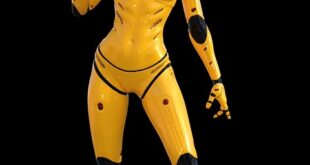Explore the Fascinating Realm of Neural Networks
Neural networks or artificial neural networks are mathematical models designed to mimic the human brain’s function. They are excellent at tasks that humans find challenging, such as image recognition, language translation, fraud detection, handwriting recognition, and improving customer experience, among others.
What Are Neural Networks?
The neural network consists of neurons, just like the neurons that humans have in their brains. Like neurons, each artificial neuron receives an input, processes it, and gives an output.
Multiple artificial neurons create a neural network, working together to solve complex problems.
How Do Neural Networks Work?
Neural networks usually work on three primary functions: Input, Hidden layers (between one or more than one), and Output.
The input layer receives information (data) and sends it to the next layer, which generates a more complicated input signal. Hidden layers can add complexity and abstraction to connections, and neurons are assigned to each natural label that describes exactly what is happening in the layer.
The output layer is where the result of the function occurs. Once it finishes the processing task, it passes the information to the output layer. After receiving the processed information, the output layer then delivers the result based on the requirement.
Why Are They Remarkable?
The exciting concept behind neural networks is their capacity to learn from data inputs autonomously, too vast for humans to program, and iteratively improve from this learning. They enhance their performance every time the dataset used for training is revised or reinforced regularly itself, Learning for future predictions, unravelling significant patterns and deductions along the way.
Neural networks are ideal for addressing unstructured, complex issues that could contribute to better company decisions, increased customer satisfaction and profits, reduced costs or avoidable losses, and even contributing to advancements in medicine.
The Future of Neural Networks
Neural Networks have come a long way since Arthur Samuel’s early innovations, so what’s next?
Going forward, greater integration with cloud, quicker calculation times, the growth of autonomous applications, which continuously feed-collect-retest Neural network-based prototypes, Without doubt, Artificial intelligence will never endeavour to supplant, replicate or surpass human intellect, but will regularly and increasingly, broaden and challenge the roles across traditional industries and sectors from education to healthcare, politics to cleaning services.
To conclude, NASA sends spacecraft, which use neural network self-destruct signals if the system sees too many parachute wires cross while opening or more feet-contraptions living in tiny boxes. Still, its real impact resides in gradually increasing our comprehension of living organisms: humans, micro-organisms, plants and animals, uncovering long-hidden quirks around our lives of organisms intertwined with machines.
 Mind Uncharted Explore. Discover. Learn.
Mind Uncharted Explore. Discover. Learn.


